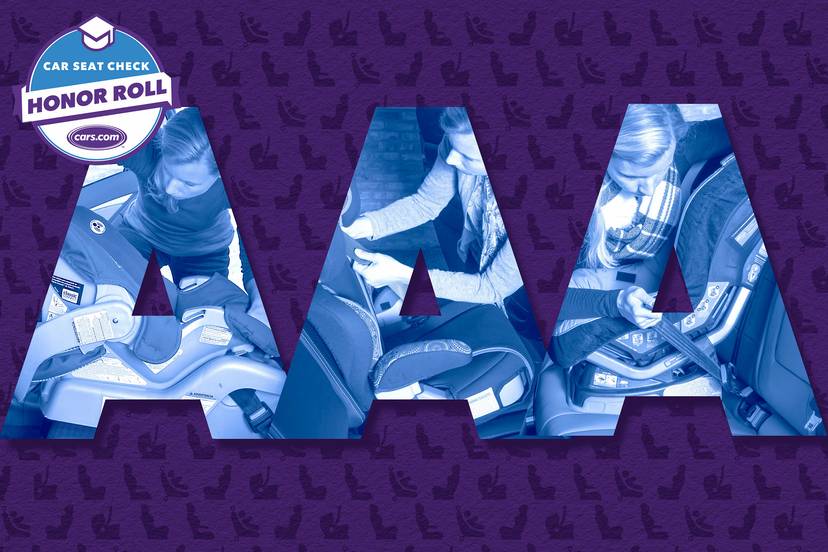
The verdict: The updated 2017 Ford Escape’s improvements are minor — if you didn’t have the Escape on your consideration list, these won’t put it there — but this compact crossover SUV is easier to live with daily.
Versus the competition: A sophisticated, punchy driving experience and impressive multimedia suite continue to define the Escape for 2017, as does its lackluster fuel economy and less-than-perfect crashworthiness ratings.
The 2017 Ford Escape features a number of small improvements that improve everyday usability despite the update not being a complete redesign. Cabin improvements in storage and quietness boost livability, while Ford’s optional Sync 3 multimedia system is more feature-packed than before, and includes Apple CarPlay and Android Auto smartphone integration. Also newly available is smartphone control for remote start and other features.
The addition of optional forward collision warning with automatic emergency braking and lane departure warning with lane departure prevention put the Escape’s safety features on a par with class leaders including the Honda CR-V, Mazda CX-5 and Nissan Rogue. Compare the Ford Escape with its competitors here.
Exterior & Styling
Dimensionally, the 2017 Ford Escape retains the same length, width, height and wheelbase as before. Compare the 2016’s specs with the 2017’s here. Cosmetic updates include new front and rear styling, and measures meant to improve aerodynamics and interior noise levels. Redone side mirrors work with new lower side cladding to improve slipperiness through the air, while new acoustic glass side windows and new hood and windshield sealing aim to keep noise outside the passenger compartment.
A new, optional Sport Appearance Package adds a few touches to liven up SE and Titanium trims including 19-inch black wheels, darkened headlight and taillight trim, and a blackened grill and lower trim.
How It Drives
As a whole, compact SUVs aren’t particularly exciting or engaging to drive. The outgoing Ford Escape distinguished itself in the group by providing sophisticated ride and handling plus powertrains that favored performance and punchiness over pokey, fuel-saving numbness. In the 2017, incremental updates improve on those characteristics. Additional sound deadening quiets the ride to near luxury levels of highway isolation, and the top optional engine is a new 245-horsepower, turbocharged 2.0-liter four-cylinder EcoBoost engine using a twin-scroll turbocharger for improved acceleration responsiveness. The 2.0-liter makes 5 more hp and 5 more lb-ft of torque than the outgoing engine for 245 hp and 275 pounds-feet of torque when using the 93-octane gasoline recommended for maximum performance.
There’s also a midlevel EcoBoost engine, a new 179-hp, turbocharged 1.5-liter four-cylinder that replaces 2016’s 178-hp, turbocharged 1.6-liter four-cylinder. This engine is so good that the 2.0-liter isn’t as much of an upgrade as its 66-hp advantage suggests. The larger-displacement four-cylinder definitely is stronger and smoother, but the 1.5-liter does the trick with vigor and well-roundedness surprising enough to get a nod of approval, even with less displacement than a 2-liter soda bottle. It didn’t shine as brightly on the steep roads outside Los Angeles, though it’s still peppy when compared with most competitors. Ford projects these two engines will account for 90 percent of Escape sales. The remaining 10 percent will use a 168-hp, non-turbocharged 2.5-liter four-cylinder available only on the base front-wheel-drive Ford Escape S trim level. The 1.5-liter is standard on SE and Titanium trims, where the 2.0-liter is optional; both pair with a six-speed automatic transmission and standard front-wheel drive or optional all-wheel drive.
The price paid for the Escape’s punchy demeanor is at the gas pump: Fuel economy ratings are on the weak side, at best an EPA-estimated 23/30/26 mpg city/highway/combined with the 1.5-liter engine and front-wheel drive. The 2016 Honda CR-V, 2016 Hyundai Tucson Eco and the 2016 Mazda CX-5 with the 2.5-liter all get a maximum 29 mpg combined with automatic transmissions.
Both of the Escape’s turbocharged engines come with new stop-start technology for 2017, a fuel-saving measure that even luxury cars struggle to perfect. The Escape’s stop-start feature is one of the smoother implementations out there, so seamless that I didn’t feel the need to immediately turn off the feature at startup as in so many other vehicles. A Ford Escape engineer predicted drivers will observe a 5 percent improvement in fuel economy using the feature.
Interior
An overhaul of the Escape’s center console opens up badly needed new storage areas for connected devices and other pocket items. The introduction of an electronic parking brake eliminated the large hand lever and allowed the gear selector to move rearward on the rising center console to a more traditional position, freeing up a lot of convenient cubby space. Particularly useful is an area forward of the cupholders that provided just enough room for my iPhone 6 to stand vertically within easy reach.
While this whole area has more usability, the materials and design remain somewhat uninspiring and stale compared with other body types, like the sporty interior of the 2016 Mazda CX-5 or premium feel of the 2016 Nissan Rogue. As with the exterior, there’s still a lot of the old Escape on the inside that doesn’t quite make it feel like a significant change from last year, even though much of what you interact with — steering wheel, center console and multimedia area — is new.
Seating position remains high with good visibility from the upright position, but stiff cushioning makes the backseat not very comfortable despite a generous amount of room.
Ergonomics & Electronics
The Ford Escape pulls away from competitors not only at stoplights, but also on the multimedia front with its responsive, easy-to-use Sync 3 that in 2016 replaced the much-maligned MyFord Touch. For 2017, the optional Sync 3 is even more robust, now including Apple CarPlay and Android Auto as well as introducing Sync Connect with an in-car modem that brings smartphone control for remote start and other features through the FordPass application. It also offers over-the-air updates when the Escape is connected to a Wi-Fi network that can improve system performance or add Sync features, eliminating the previous method of downloading a file to a USB drive and plugging it into the car. The revised Sync 3 launches the Escape into the in-car-technology conversation as MyFord Touch never did – meaning in a good way. Sync 3 with Sync Connect is standard on Titanium trims and available on SE trims as part of an SE Technology Package that also comes with blind spot monitoring and five years of data service for the app-based Sync Connect functions.
Cargo & Storage
Cargo room is unchanged for 2017 and remains roomy with 34 cubic feet of storage space and a total 68 cubic feet with the backseat folded. That backseat, though, is heavy and the larger portion of the split seat back is a chore to pull back into position after folding. Other cargo features include an optional power liftgate on the SE trim, while the Titanium includes it standard with a kick-to-open function activated by swiping your foot under the rear bumper.
Safety
The 2016 Ford Escape wasn’t the cream of the crop in crashworthiness ratings or safety feature offerings, and half of that has been addressed for 2017. Newly added safety options include forward collision warning with automatic emergency braking, adaptive cruise control and lane departure prevention. Ford has executed these features well on the Escape, with adjustability baked into the alerts and lane correction so the car isn’t blaring at you in stop-and-go traffic like a perturbed R2-D2. The Escape restricts these features to the most expensive trim level, the Titanium, as an option. Subaru, for example, allows precollision with automatic braking to be selected on its less-expensive Forester models for a lower entry cost than the Escape.
Crashworthiness ratings for the 2017 weren’t available at the time of publishing, but Insurance Institute for Highway Safety spokesman Russ Rader anticipates the 2016 Escape’s rating of poor in the small overlap front crash test will carry over for 2017 because Ford has reported no structural changes. The test evaluates how well the outer corners of a vehicle respond to frontal impacts with another vehicle, tree or utility pole, and has proved a difficult test for some vehicles. However, the 2016 Honda CR-V, 2016 Mazda CX-5 and 2016 Nissan Rogue aced the test with the agency’s best rating of good. The 2016 Escape scored good in the remainder of IIHS’ crash tests of moderate overlap front, side, roof strength and head restraints and seats.
A backup camera is standard. See all of the Escape’s safety features here.
Value in Its Class
Ford scaled back pricing for 2017 on the SE and Titanium trims, slashing base prices by $690 and $895, respectively. It’s a good move, and most Escape buyers will see the benefit of the lowered pricing on popular SE ($25,995 to start with destination) and Titanium trims ($29,995).
Escape retail prices still skew high considering that the volume-selling SE remains a relatively barren car without desirable features such as Sync 3, heated seats, keyless access with push-button start, moonroof and a blind spot warning system, which, except for Sync 3, are examples of standard features you’ll find on midlevel trims from other automakers. The CR-V EX for $26,895 includes keyless access with push-button start, moonroof, heated front seats and power driver’s seat. The $26,095 CX-5 Touring includes keyless access with push-button start, blind spot warning, heated front seats and power driver’s seat.
At $36,650, a Ford Escape Titanium I drove had the optional 2.0-liter, all-wheel drive, panoramic moonroof, navigation, adaptive cruise and forward collision warning, but it didn’t have appropriate interior trimmings to match that price tag. It still is very much like the old Escape on the inside but with additional features. The minimum price to get an Escape Titanium with its forward warning collision system is $30,590 with an optional $595 package. That’s less than a CR-V Touring with its precollision system ($32,995) and the Mazda CX-5 precollision for $32,105. A Subaru Forester, however, comes in lower at $27,940 with the optional safety feature on a 2.5i Premium.
Overall, the mild redesign brings the 2017 Ford Escape’s feature offerings more in line with the rest of the class, and it easily stands out from the crowd with its driving refinement and multimedia technology, but this isn’t a wildly different vehicle. It excels in some ways but doesn’t improve significantly in others.















































